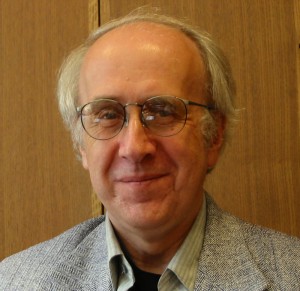Claude E. Shannon: Cult Figure
A. Michael Noll
May 7, 2016
© 2016 AMN
Has a cult developed, worshipping Shannon as the guru of information theory? April 28, 2016 would have been his 100th birthday and thus interest in him has exploded. Shannon is characterized an eccentric, riding a unicycle while juggling. This perhaps adds to his status as a cult figure.
I attended a recent event honoring Shannon at which little children ran up and down the aisle, the synthetic-speech Voder was resurrected and played, a tap dance roamed across the stage, lights flashed on the screen, and people in the audience waved their arms. I watched in amazement, wondering what any of this had to do with Shannon, other than being a source of noise.
Shannon warned in 1956 that information theory “has perhaps been ballooned to an importance beyond its actual accomplishments” and that information theory is “not necessarily relevant to such fields as psychology, economics, and other social sciences.” Shannon concluded: “The subject of information theory has certainly been sold, if not oversold.” [Claude E. Shannon, “The Bandwagon,” IRE Transactions on Information Theory, Vol. 2, No. 1 (March 1956), p. 3.]
John R. Pierce (the father of Telstar) knew and respected Shannon. Pierce warned: “Information theory is not nonsense just because much nonsense has been written about it.” [John R. Pierce & A. Michael Noll, Signals: The Science of Telecommunications, Scientific American Library (New York), 1990, p. 54.]
Information theory defined entropy and redundancy in telecommunication. Shannon presented an overall diagram, or model, of a communication system – and all sorts of fields to which its application was unclear then adopted this model. Shannon determined the maximum capacity of a channel based on its bandwidth and signal-to-noise ratio. [C = W log2 (1 + S/N)] Shannon’s work was the foundation of coding theory and error-correcting codes. After the development of integrated circuits and microprocessors, these codes make practical the audio compact disc and digital video disc. One of Shannon’s less publicized accomplishments was the application of Boolean algebra to switching circuits (M.S. thesis, 1938).
It clearly was not solely Shannon. Others had preceded him (e.g. Hartley) and also were contemporary (e.g. Norbert Wiener) with him. Most great discoveries and advancements were not the product of just one person, but include those who preceded, and also contemporaries. Unfortunately, we all too frequently center our attention on just one and ignore all the others.




